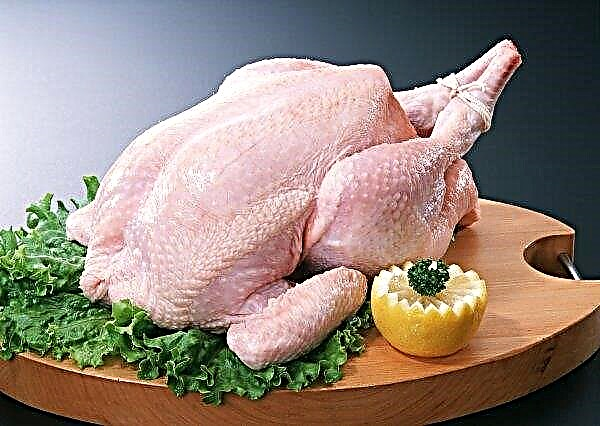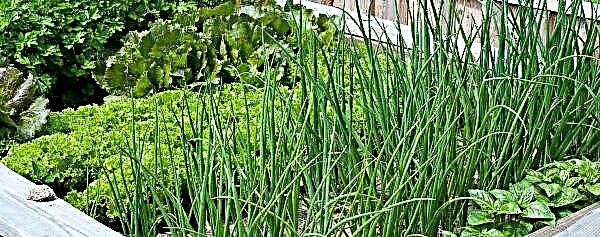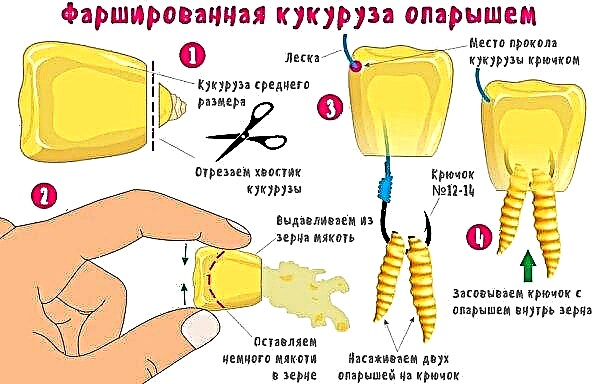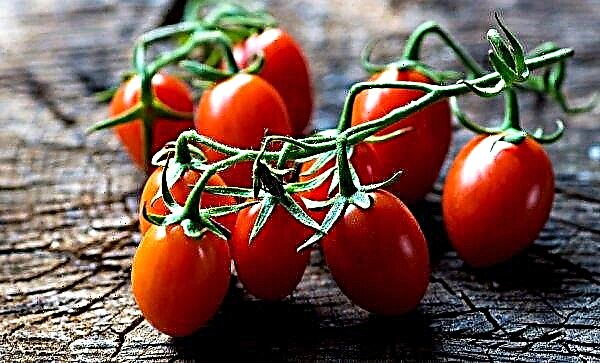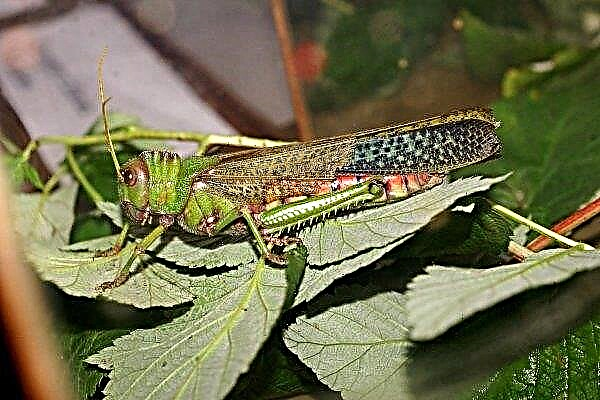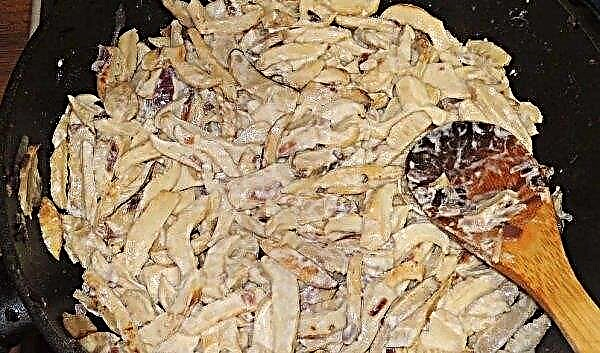Juniper middle Blue & Gold differs from other varieties with a very unusual color of needles, so it is often used to create various compositions in landscape design. It goes well with other plants and brings a unique flavor to the landscape. In nature, juniper is average, like other Chinese species, hybrids and varieties of this plant, is widespread in Japan, Korea and Northern China.
Botanical Description
Juniperus media or Juniperus pfitzeriana Blue and Gold is very popular due to the fact that it has a two-color crown. On the shoots of this shrub both blue and yellow needles grow at the same time, which looks very original. His crown is quite sprawling, irregular in shape.

An adult plant is a little less than one meter tall and the same in diameter. It grows very slowly, only 10 cm per year. On the shoots, dark blue pine cones ripen with a bluish bloom.
Important! Juniper is a poisonous plant, so when working with it, it is advisable to use gloves.
This variety is unpretentious to the type of soil for growth. It can safely develop on sandy, rocky and even very acidic soils. It adapts normally both in summer cottages and in urban conditions. Resistant to lower temperatures. The only thing that Blue & Gold Juniper does not tolerate is stagnation of water near the rhizome.
Landing
Blue and Gold can be planted both in autumn and spring, the main thing is that it is not hot at this timeotherwise the young weakened shoots may burn. To plant this juniper variety, you need to choose well-lit places, because if he does not receive enough sunlight, this will affect the quality of the color.
It is also necessary to protect the plant from frosty winds, and find a place closed from them. About a month before planting, you need to dig up land on the site to make it easier. To fill the hole, a special mixture of equal parts of sand and turf is prepared, and then the same amount of peat is added to it.
You need to plant juniper medium Blue & Gold in this order:
- Choose a suitable seedling with healthy shoots, the needles on which do not fall off and do not have dark spots.
- Place the young plant pot in the root stimulant solution overnight.
- Dig a hole about 70 cm deep and about two times wider than the parameters of the pot.
- Pour a drainage layer of broken brick or stones. It will be enough 20 cm.
- Carefully remove the seedling, being careful not to damage the earthen lump.
- Lower it to the center of the pit and place it strictly vertically.
- Sprinkle the seedling with a pre-prepared soil mixture, gently tamping so that there are no voids. The root neck must remain on the surface, otherwise the plant may die.
- Mulch the soil around the bush with dry grass or peat to protect against overdrying.
 The first time after planting, it is necessary to protect the young plant from direct sunlight, and also regularly water it so that it takes root and gain strength as soon as possible.
The first time after planting, it is necessary to protect the young plant from direct sunlight, and also regularly water it so that it takes root and gain strength as soon as possible.
Juniper Care
In order for Juniper Blue and Gold to look healthy, and its needles to be bright and beautiful, it is necessary to care for it rationally.
Did you know? In ancient times, it was believed that the smell of juniper scares away evil spirits.
He is not very whimsical and requires a minimum of care, which includes such events:
- moderate watering during the hot period, which can be dispensed with if it rains frequently;
- weekly spraying of branches with warm water, which protects against burning in the sun;
- loosening the soil and removing weeds;
- annual sanitary pruning with full cutting of dry, charred and diseased shoots;
- spring top dressing with special fertilizers for conifers in quantities specified in the instructions;
- preparation for winter, sheltering young plants with spruce branches or fabric;
- protection against diseases and pests.
Possible diseases and pests
Juniper Blue and Gold is susceptible to a disease such as rust. Its symptoms are manifested by brown growths with an orange coating. Rust-infected branches die off, and eventually the whole plant may die if treatment is not started in time.
 At the first signs of an ailment, diseased shoots must be removed, and the bush treated with a solution of "Arcerida".
At the first signs of an ailment, diseased shoots must be removed, and the bush treated with a solution of "Arcerida".
The most common pests of this juniper variety are spider mite, aphid and scale shield. To protect against them using drugs "Karate", Decis and Fitoverm according to instructions. For prevention, it is also recommended to spray plants with insecticides or copper-containing preparations.
It must be remembered that only bushes that grow without adhering to the rules are susceptible to diseases and pests. Healthy and strong plants do not get sick, and the natural smell of juniper repels insects.
Important! When sanitary pruning of diseased plants, it is necessary to disinfect the tools so that the disease does not spread to neighboring copies.
Breeding methods
The Blue & Gold variety is propagated by layering and cuttings. Seed propagation is possible, but it is such a long process that it is rarely used. When cuttings are propagated and propagated by layering, all varietal properties are preserved, so you can be sure of the quality of the seedlings obtained.
Cuttings are torn off with a heel so that they take root well. It is advisable to do this in spring, on cloudy days. Rooted cuttings for about three months in a small greenhouse. They are planted in a permanent place after two years.
 Planting is carried out in the same way as in the case of seedlings from the pot.
Planting is carried out in the same way as in the case of seedlings from the pot.
Use in landscape design
Since the juniper middle Blue and Gold perfectly survives on soils of different composition, it is grown both in gardens and in personal plots, and in city parks. It lends itself very well to pruning, so you can form a crown according to your preference. This gives the ability to create original topiary from juniper and use it in bonsai art.
Blue & Gold looks spectacular in contrasting group landings, and in single. And he is often planted with the aim of creating a vibrant hedge and lawns, with his help zoning the territory. You can grow this ornamental coniferous plant in pots and containers, decorating balconies, loggias, terraces and roofs.

Juniper medium Blue and Gold does not change its color throughout the year and does not lose needles, so it can please you at any time. The main thing is to properly care for it, provide good watering and lighting, as well as protect it from pests and diseases.


